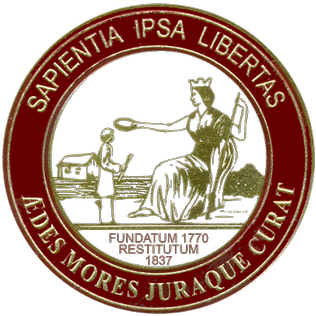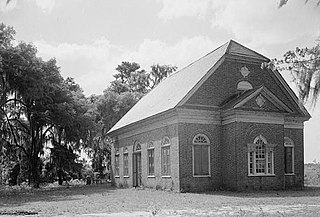 W
WThe Battle of Cape Fear River, or the Battle of the Sandbars, was fought in September 1718 between a British naval expedition from the Province of South Carolina against the pirate ships of Stede Bonnet. British forces defeated the pirates in the Cape Fear River estuary which led to Bonnet's death by hanging in Charleston.
 W
WBritish Army Independent Companies of Foot were first established in North America in 1664. The first independent company in South Carolina was organized in 1721. With the raising of Oglethorpe's Regiment in 1737 it was disbanded. In 1746 three understrength independent companies were sent to South Carolina, but they were disbanded three years later. When Oglethorpe's Regiment was disbanded the same year, three new independent companies were raised in South Carolina, partly recruited with soldiers from the disbanded regiment. These three companies participated in the French and Indian War and the Cherokee War, participating in the Battle of Fort Necessity, the Braddock Expedition, the battle of the Monongahela, and the siege of Fort Loudoun. They were disbanded in 1763, with the rest of the British army independent companies in North America.
 W
WLefebvre's Charles Town expedition was a combined French and Spanish attempt under Captain Jacques Lefebvre to capture the capital of the English Province of Carolina, Charles Town, during Queen Anne's War.
 W
WThe College of Charleston is a public liberal arts college in Charleston, South Carolina. Founded in 1770 and chartered in 1785, it is the oldest college in South Carolina, the 13th oldest institution of higher learning in the United States, and the oldest municipal college in the country. The founders of the college include three future signers of the Declaration of Independence and three future signers of the United States Constitution.
 W
WThe history of the colonial period of South Carolina focuses on the English colonization that created one of the original Thirteen Colonies. Major settlement began after 1651 as the northern half of the British colony of Carolina attracted frontiersmen from Pennsylvania and Virginia, while the southern parts were populated by wealthy English people who set up large plantations dependent on slave labor, for the cultivation of cotton, rice, and indigo.
 W
WHenry Laurens was an American merchant, slave trader, and rice planter from South Carolina who became a political leader during the Revolutionary War. A delegate to the Second Continental Congress, Laurens succeeded John Hancock as President of the Congress. He was a signatory to the Articles of Confederation and President of the Continental Congress when the Articles were passed on November 15, 1777.
 W
WThe Old Sheldon Church Ruins is a historic site located in northern Beaufort County, South Carolina, approximately 17 miles (30 km) north of Beaufort in the Sheldon area.
 W
WPompion Hill Chapel is small "back parish" church near Huger, South Carolina. Built in 1763, it is a virtually unaltered example of a brick Georgian parish church, retaining interior and exterior finishes. It was declared a National Historic Landmark in 1970.
 W
WThe Province of Carolina was an English and later a British colony of North America. Carolina was founded in what is present-day North Carolina. Carolina expanded south and, at its greatest extent, nominally included the present-day states of North Carolina, South Carolina, Georgia, Alabama, Tennessee and Mississippi.
 W
WSt. James' Church, Goose Creek, also known as the Goose Creek Church, is an Episcopal church at 100 Vestry Lane in Goose Creek, South Carolina. Built in the 1710s, it is one of South Carolina's oldest surviving buildings, and one of a small number of surviving early Georgian chapels in the nation. It was declared a National Historic Landmark in 1970.
 W
WSt. James Church, Santee, also known as St. James Episcopal Church, Santee, is a historic church located in a remote portion of Francis Marion National Forest in Charleston County, South Carolina. Built in 1768, it is a remarkably sophisticated expression of fashionable Georgian architecture in a remote area, and was designated a National Historic Landmark in 1970 for its architectural significance. It is located on the west side of the Old Georgetown Road, several miles north of South Carolina Highway 46 and McClellanville.
 W
WThe Province of South Carolina was originally part of the Province of Carolina in British America, which was chartered by eight Lords Proprietor in 1663. The province later became the U.S. state of South Carolina.
 W
WOld St. Andrew's Parish Church is a historic church in Charleston, South Carolina. It is the oldest surviving church building in South Carolina.
 W
WSt. David's Church and Cemetery is a historic church and cemetery on Church Street in Cheraw, South Carolina.
 W
WSt. Michael's Episcopal Church is a historic church and the oldest surviving religious structure in Charleston, South Carolina. It is located at Broad and Meeting streets on one of the Four Corners of Law, and represents ecclesiastical law. It was built in the 1750s by order of the South Carolina Assembly. It is listed on the National Register of Historic Places and is a National Historic Landmark.